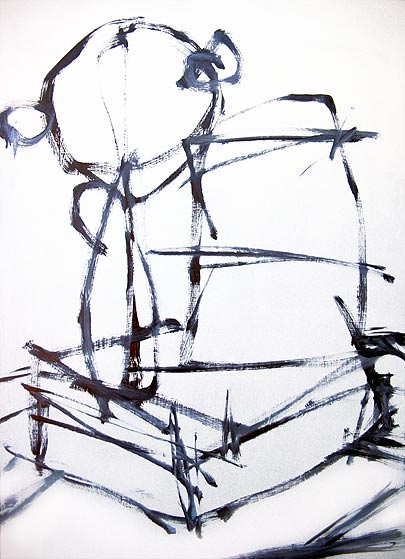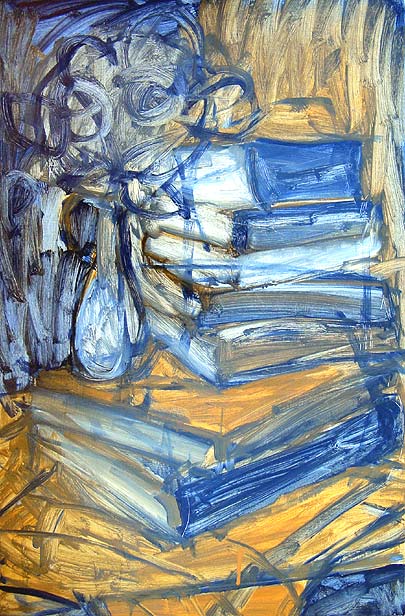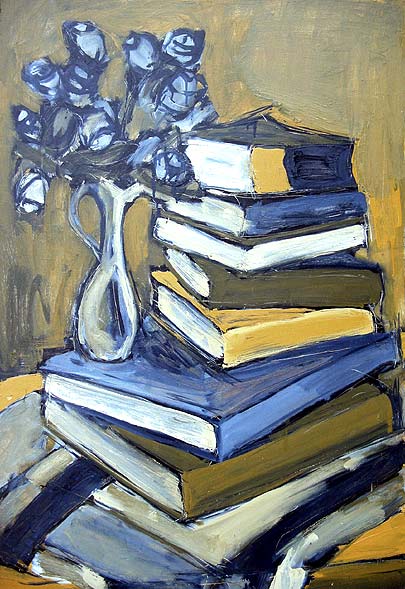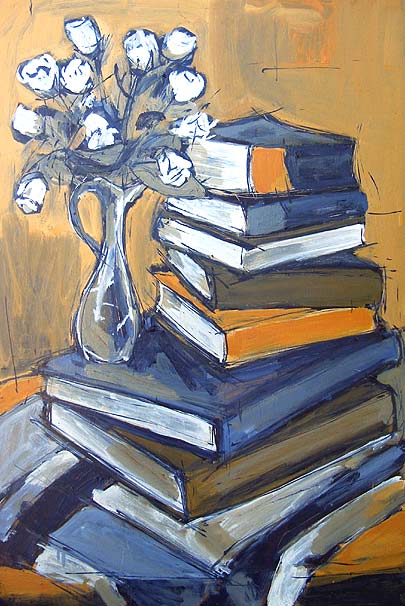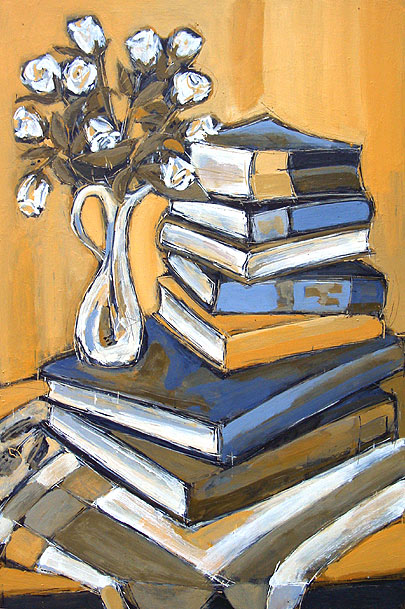| books and flowers 2003 - Demonstration | |
| First of all I like to be familiar with my subject matter. Painting still life works for me has simply been an acknowledgment of my surroundings. Everywhere we look in our homes there is a painting just waiting to happen. I can be inspired by a toothbrush, a pile of shoes, or a collection of bottles. The term "artist's block" sounds foreign to me as I love the act of painting and see new and exciting subjects to be painted everyday. This particular work is of a pile of favourite artist books and a vase of plastic flowers from my toilet. | |
|
|
| step1 Part of the fun with still lives is arranging the subject matter. I like the items to look like they've just been thrown onto the table randomly, whilst still considering the composition as I arrange them. When I am happy with the arrangement I start sketching very loosely with a large brush and some diluted paynes grey. It is a very playful stage. |
|
|
|
| Step
2 Then I start to refine the subject matter and make any compositional changes that I missed in the first stage. Still using very fluid paint (mixed with archival classic medium) I try to cover all the white areas of the board. I start thinking about lights and darks but keep the colours very basic as this is just a blocking in stage to get the form and composition right. |
|
|
|
| Step3 Between each layer I leave the painting for a day or two to dry. I enjoy this process as it gives you time to see how the work is progressing. The books and flowers are now starting to become more recognisable. The finished colours are also starting to be introduced and I am starting to make them cleaner. I have kept the colours to a minimum of paynes grey, yellow oxide, and titanium white. A focused palette can help to strengthen the structure and composition of your painting as you are not seduced into relying on beautiful colours to make the finished work more pleasing. |
|
|
|
| Step
4 At this stage I just continue to refine the image. I keep working over each stage and making any changes necessary. Tones and colours are changed with each new layer, working slowly towards the finished image. Often previous stages show through and add interesting and unpredictable effects. Scratching into the paint with a nail punch can also add to the textural finish and emphasize lines. |
|
|
|
|
t:
books & flowers d: 2003 m:
oil on board s: 60x90cm
|
|
| Step
5 I never try to rush a painting by trying to finish it quickly. If it takes 30 sittings or more than so be it. My works tend to look very rushed and spontaneous but they are actually worked on over many sittings with much contemplation in between. In the final stage I work on strengthening the tones, making sure the contrasting areas of the image are working. Highlights are added and any areas that need lightening are changed. Knowing when the painting is finished can be quite challenging as some works never really seem finished, yet others tend to climax nicely and you just know that it is complete |
